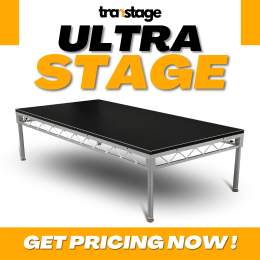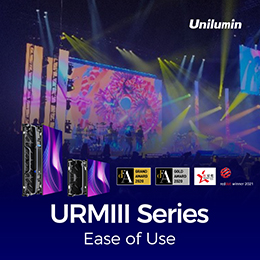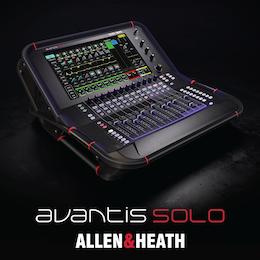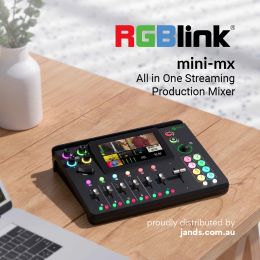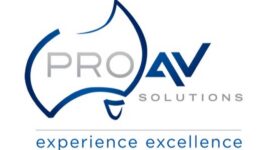News
12 Nov 2002

The start of Production in Australia
Subscribe to CX E-News
It had to start somewhere. We visit long forgotten names like AWA, Magnavox and even Rola. How did we start? Was a rock struck against a flint and the spark made sound and lighting? Not so exciting…… (Remember to click on the pix for a bigger view, and email mail@cxnetwork.com.au with updates, more info, or more old pix!) THE SIXTIES
It is impossible to review the development of performance audio & lighting in Australia without mentioning the Sixties, because that is where it really started. Not much was going on in Sydney. AWA, Magnavox and ROLA (now known as Lorantz) dominated the local speaker industry. Extremely high import duty taxes at the time encouraged local companies to make speakers and public address systems. It is worth noting that modern audio and stage lighting systems were derived from cinema audio systems (such as Altec) and theatrical and industrial (building) lighting.
Bob Purvis in Perth was one of the earliest pioneers of audio reinforcement in Oz. He was the first audio hire contractor in Western Australia in 1955 (and possibly the whole country) with his company Purvisonic Sound. A very young Ian McLean was his apprentice. Ian went on to work for Seeburg background music systems. Purvis built amps and speaker boxes and was the first person to import the legendary SAE amplifiers to Australia. Ian McLean moved to Sydney in the early sixties and started building column speaker boxes with 4 x 8-inch ROLA speakers in each, each tapped with a 5-watt (100-volt) line transformer. Ian built his own 50 watt mixer-amplifiers to drive them. He went on to build his own version of a self-powered box in 1974 by using a modified JBL 4530 cabinet made by WASP Industries with an Altec 211 horn. His hire company, ‘Sound Affair’ was very active during the Seventies and later changed its name to SAVI (Sound And Visual Innovators) in 1993. Ian founded the Sontec Group in the Eighties which has recently been absorbed by Chubb Industries. He now runs Tecsound, a sound contracting business.
Gary Nessel and John Woodhead founded the Strauss company in Melbourne in March 1962. They manufactured guitar and bass amps from day one and PA amps and boxes from late 1962. It soon became a case of not who used Strauss, but who didn’t! The mighty ‘Warrior’ and ‘Hurricane’ guitar amps and ‘Bandit’ bass amp were to become the prime choice of musicians across Australia. They built large-scale sound systems from Altec Lansing designs, powering them with huge Strauss valve amps and using Strauss active crossovers. They built their own mixers and were well in advance of their Sydney counterparts. In 1969, the company name was changed to NOVA SOUND.
In 1960, an RCA engineer named Victor Kay (Snr) moved to Sydney from Brazil and went to work for AWA. Import duties on imported speakers at that time was around 45%, so Victor made his own 12-inch and 15-inch speakers in 1963 under the name of ‘Lafayette’. Victor formed the ETONE company in the late sixties to manufacture speakers. They still do to this very day.
In Brisbane, Tony Troughton, a former chief engineer for the Western Electric Company (U.K.), started building guitar, bass and PA amps under the name of VASE in the early sixties. Troughton had been a pioneer of active PA technology and recording equipment in England. Brisbane was actually the ‘rock capital’ of Oz in those days and VASE sold incredibly well. His apprentice was a young man called Jon Burnett. Hans Overeem was also developing a reputation in Brisbane and was the first person to build an aluminium-extruded amplifier in the world.
In 1965, Jon Burnett moved to Sydney where he worked with Bruce Brown servicing amps and organs. Organ companies were the first to develop and use solid-state technology and the Lowry company took solid state to its highest level of development. Bruce Brown was the most-knowledgeable man at the time and taught John about the new technology. These organs led directly to the synthesisers and computer-based technologies that we know today. John started the LENARD company (his middle name) in 1966 in Sydney. His first bass amp was built for the brilliant Duncan McGuire and the first PA system went to Doug Parkinson’s band, the Questions, which was the first band to use all-Lenard equipment.
Burnett and the infamous, eccentric Roger Foley (a.k.a. LSD Fogg) started producing ‘events’ for venues and gained a reputation for professionalism and ingenuity. Their audio and light shows were extraordinary!
Back in the sound realm, John Burnett employed Jim Pye (later to form CORD SOUND) as a retail financier to help bands buy equipment. Sales surged as a result of sponsoring the 2SM ‘Battle Of The Bands’ contest and the Ourimbah festival, where all stage and PA equipment was LENARD. Michael Dickson joined LENARD in order to work closely with Victor Kay (Snr) at Etone to produce high-powered speakers to drive bigger systems. As a result, the first speakers with 3-inch and 4-inch voice coils emerged (believed to be the first of their types in the world). An unfortunate association with a prominent Sydney family saw LENARD dissolve into a mess with John Burnett forced out of his own company and Hans Overeem bought in to run the business. Loyal company employees rebelled against the new owners and the company was internally sabotaged. LENARD ceased in 1972.
Ian Johnstone (now at EVI) arrived in Australia in 1967 as a roadie from New Zealand and stayed to form WASP Industries with Doug Henderson (now at Powerhouse Studios), making valve amplifiers under the name of ‘Holden’ which was a New Zealand company owned by Ron Holden. Ian bought Doug out in 1968. The WASP 200 watt bass amp became an industry standard for many years, being used by bands such as Sherbet, Hush, Flying Circus, Blackfeather and Jeff St. John’s Copperwine.
Gill McPherson formed Phoenix in Sydney and made amps and speaker boxes. He later joined forces with Jim Pye to form CORD SOUND. Their most-famous PA system was the ‘Purple People Eater’ which they built for Sherbet in 1972. They also built guitar and bass amps.
In June 1967, Bruce Jackson and Philip Storey began lighting parties in backyards with the help of some university friends. They had met at Vaucluse Boys High School, where Bruce built the PA system ‘in a table top’, which Connections publisher Julius Grafton later learned how to drive. They later established J&S Research Electronics above a shop in Rose Bay, which became JANDS.
The Sixties were basically the ‘raw’ decade, when local bands became instant heroes and Rock’n’Roll took a grip on Australia. Glenn A. Baker fondly recalls seeing the Beatles at The Stadium (a boxing arena) in Sydney (around 1964) playing to a huge audience through two PA columns and utilising the house lighting only! Local bands carried small vocal systems (powered mixer and 2 columns) and their stage gear. Support personnel were usually a manager and a road manager (roadie – who looked after everything including transport, equipment and accommodation. An old term these days, not used). Any large outdoor or indoor shows usually featured multiples of columns stacked together. Microphones were basically Shure or AKG and portable lighting systems were virtually nonexistent until the late sixties when Strand Electric introduced the Fresnel spotlights.
THE SEVENTIES
By the end of the late 1960’s, Rock and Roll was firmly established as a ‘weekend pursuit’ in Australia. In an unprecedented era, our most-popular bands were accessible to huge audiences on a regular basis in local halls in suburban areas. Under-18 venues were numerous and promoters usually had a minimum of 4 bands on view per night at each location. A typical Saturday night dance might feature four top-line acts such as The Easybeats, Billy Thorpe and The Masters Apprentices etc.. Each act would do a 30 minute spot, pack up everything and move on to another venue. They each carried their stage gear and small column-style PA systems. Nobody shared equipment unless an emergency arose. If the band had a roadie, they were considered to be very successful and were accorded serious respect. Transport was usually the good old Holden station wagon or panel van.
The most-common PA systems were still ‘column-style’ boxes with either 4 x 12-inch speakers in each or 2 x 15-inch, sometimes with a tweeter or a small horn! The boxes were usually made from pine board. They sometimes exploded when wet! Lighting was still nonexistent, with the standard hall lights left on all night! Local audio manufacturing was starting to get serious. The self-powered mixer was well and truly invented by 1970! The Lenard version had four input channels, each with the dreaded high-impedance input and primitive 2-band equalisation. It featured 150 watts of thumping power!
A very early international show at Randwick Racecourse (circa 1971) featured Deep Purple, Free, Manfred Mann and Piranha (Oz support) had approximately 10 Lenard PA boxes per side mounted on trestle tables (you know, the ones with ‘rocking horse’ legs!) driven by 10 Lenard ‘powered mixers’ linked with guitar leads! No multicores, no huge audio consoles, no graphic equalisers; everything was done from backstage. You had to be there to believe it! But in those days, it was huge.
(Continues in ‘History’) COMMENTS: juliusmedia@me.com |
||
Subscribe
Published monthly since 1991, our famous AV industry magazine is free for download or pay for print. Subscribers also receive CX News, our free weekly email with the latest industry news and jobs.











